#thespesius
Text
Dinofact #109
Edmontosaurus' taxonomic history is quite complicated, with specimens belonging to E. annectens being classified as many other species, such as Hadrosaurus, Diclonius, and Claosaurus, as well as the dubious genera Trachodon and Thespesius, and, now synonymous with Edmontosaurus, the genera Anatosaurus and Anatotitan.
Source: Wikipedia
#dinosaur#dinosaurs#paleontology#edmontosaurus#edmontosaurus annectens#e. annectens#taxonomy#hadrosaurus#diclonius#claosaurus#trachodon#thespesius#anatosaurus#anatotitan#fun facts#trivia#dinosaur trivia#dinosaur fun facts#24th#december#2022#december 24th#december 2022#december 24th 2022
7 notes
·
View notes
Photo

Thespesius, 1901, by Charles R. Knight
67 notes
·
View notes
Note
Are Trachodon, Hadrosaurus, Claosaurus, Anatosaurus and Anatotitan all the same as Edmontosaurus?
Well, that depends on who you ask. There are two widely accepted species of Edmontosaurus: The earlier, smaller, shorter-faced, crested E. regalis and the later, larger, longer-faced, so-far-crestless E. annectens.
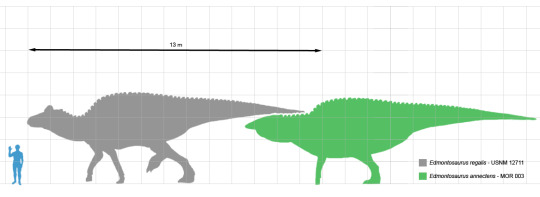
(Image by Matt Martyniuk)
E. regalis is the type species of Edmontosaurus; E. annectens was later assigned to it.
“Anatosaurus” is a genus that was coined specifically for E. annectens when it was widely thought distinct enough to merit its own genus. This isn’t widely accepted nowadays, though it is used by some people (notably, by the creators of the videogame Saurian).
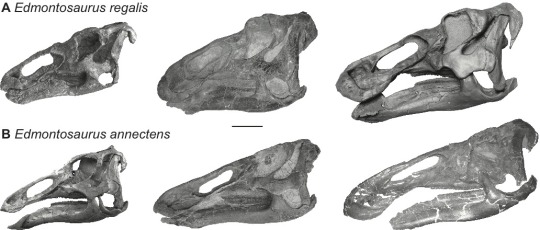
Pictured: Awkward yearbook photos, featuring “Anatotitan” in the lower right.
“Anatotitan” was thought to be a distinct animal from both Edmontosaurus species. However, more recent work has revealed that it likely just represents an older E. annectens, making it a junior synonym.
Here’s where it starts to get a little tricky. Claosaurus agilis was originally named as Hadrosaurus agilis in 1872; it was later given its own genus in 1890. Edmontosaurus annectens was originally then described as Claosaurus annectens in 1892, and then Edmontosaurus regalis was named as a new genus and species in 1917. In 1942 annectens was placed into the new genus “Anatosaurus”, where it stayed until it was moved into Edmontosaurus in 1990.
Are you with me? Good. Let’s talk about dubious taxa.
If a species can be reliably distinguished from other species, and confidently stated to be different, it’s called a diagnostic taxon. So what if it isn’t, and how did these come about?
In the early days of palaeontology, everything was new. If you found something, chances were pretty high it was like nothing ever before seen, so even the scrappiest crappiest bits of bone could have never-before-seen features that meant they could be clearly distinguished from everything else we knew of.
The key word there is “knew” - because we’ve found so much more since then, and this newer stuff is more complete. Features that once were brand new and unique were found to be present in whole swathes of animals, and so taxonomic rot set in. Taxa that were once diagnostic now were just crappy bits of bone that no one could say were unique.
So, that’s okay, right? We can just sink those into newer species. Right?
Unfortunately….not really. There’s a precedent of taxonomic priority - that the oldest name is the one that should be used. This is a good rule to have in most cases, because it prevents some devious egomaniacal upstart from coming in and naming new species to overtake old ones. But since a lot of these crappy fossils were named first….well, we can’t really sink them. Nor can we prove that these newer fossils are the same as the older ones….because the older ones are so crappy. They could be anything. They could be unique. They could be the exact same as something else. We don’t know. They’re dubious taxa.
Okay, that’s a lot of words. We’re here for pictures, damn it, let’s see the dinosaurs.

This is Trachodon. Well, it’s all we have of it.
One thing you’ll notice very quickly is that a lot (a LOT) of these old crappy genera are used as taxonomic garbage cans. Because they’re so scrappy, you could argue that ANYTHING that looks similar to them should be inside that genus, and so new species that are described will be shoved into there - and yes, this included annectens.
What actually was Trachodon? Well, it’s a mixture of ceratopsian and hadrosaur teeth. It’s probably something like Lambeosaurus, more specifically.

This is Thespesius. Try not to marvel at its amazingness.
Thespesius was named the same year as Trachodon (1856), and by the same dude, no less. Uh, there’s not a ton to say about this one. It was used as a dumping ground for other species - including E. annectens. It’s too scrappy to really say anything about.
What actually was it? Realistically? Edmontosaurus annectens, but you can’t prove that, and it was named first.
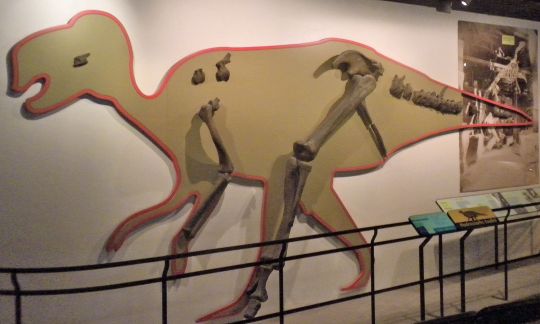
This is Hadrosaurus. Surprisingly un-crappy! Believe it or not, these bones were the first reason we knew that some dinosaurs walked on two legs.
Hadrosaurus was described in 1858, two years after Trachodon. It’s been considered dubious on and off throughout the years; it seems it might actually not be dubious (surprisingly). It’s another wastebasket taxon, and yes, annectens was considered a part of it at one point.
What actually was Hadrosaurus? It was a hadrosaur (shocker!) that was probably more “primitive” than either the hollow-crested lameosaurines or the flat-headed saurolophines.
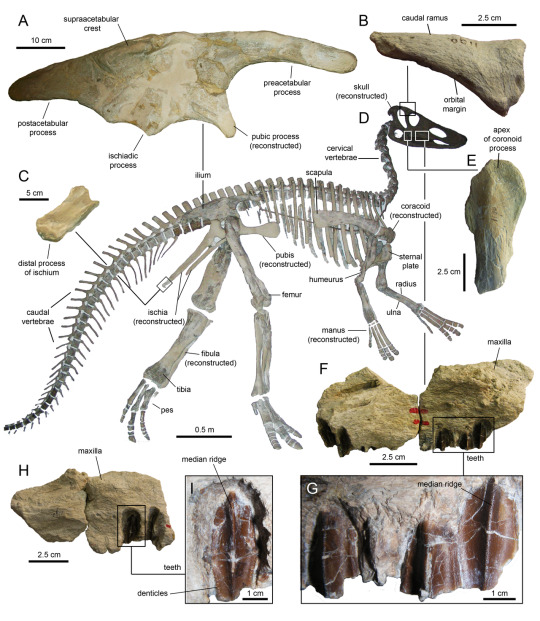
This is Claosaurus. No, not the whole thing, just the photos around the edges. The rest is just a best-guess.
Claosaurus was named as a species of Hadrosaurus in 1872, then given its own genus in 1890. Like Hadrosaurus, it was used as a major wastebasket taxon, and like Hadrosaurus, it’s hanging out in taxonomic limbo where no one is willing to say if it’s dubious or not. The general consensus on this one seems to be “diagnostic enough”.
What actually was it? Probably a non-hadrosauid hadrosauromorph, if you can believe that.
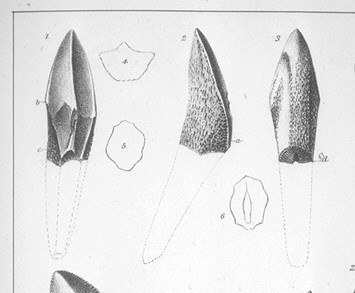
I couldn’t find a picture of Diclonius. This isn’t Diclonius, it’s Trachodon. But it might as well be Diclonius. Imagine that picture but very slightly different.
Diclonius was named in 1876. Surprise! It’s a wastebasket taxon. Surprise! It’s dubious.
What was it really? ¯\_(ツ)_/¯ Eh, it was a hadrosaurid of some kind. Probably a lambeosaur.
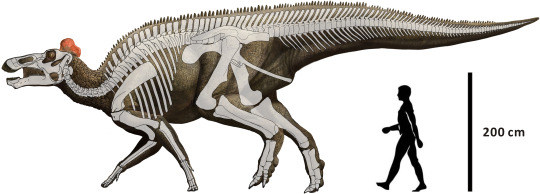
And there you have it! I’m sure your life was amazingly enriched by the knowledge of these obscure dubious taxa. Tell your friends all about them. Write to your representative. Buy this t-shirt and I get 0% of the profits. Make a cake with Thespesius on it. Hunt down Diclonius and send me a picture.
273 notes
·
View notes
Text
Thespesius occidentalis

By Jack Wood on @thewoodparable
PLEASE support us on Patreon! We really do need all of your support to keep this blog running - any amount helps!
Name: Thespius occidentalis
Name Meaning: Wondrous One
First Described: 1856
Described By: Leidy
Classification: Dinosauria, Ornithischia, Genasauria, Neornithischia, Cerapoda, Ornithopoda, Iguanodontia, Dryomorpha, Ankylopollexia, Styracosterna, Hadrosauriformes, Hadrosauroidea, Hadrosauridae, Saurolophinae
Thespesius is a poorly known Saurolophine that, nonetheless, has one of the more interesting genus names given to a dinosaur, discovered in the Lance Formation in South Dakota. It lived about 66 million years ago, in the Maastrichtian age of the Late Cretaceous, making it one of the later surviving hadrosaurs. It was described based on some vertebrae and a phalanx of what seemed to be colossal size, indicating that it would have been a fairly large hadrosaur. At the time of its discovery it was uncertain whether the remains came from the Cretaceous or the Miocene, and as such it wasn’t given a -saurus suffix, on the off chance it was a mammal. Though it was found to be a dinosaur, later research on the animal revealed it to be poorly known, and though often a classically important hadrosaur, much like Trachodon, it hasn’t been given much attention or import since the early 1900s.
Source:
https://en.wikipedia.org/wiki/Thespesius
Shout out goes to @revedas!
#thespesius#thespesius occidentalis#dinosaur#hadrosaur#paleontology#prehistory#prehistoric life#dinosaurs#biology#a dinosaur a day#a-dinosaur-a-day#dinosaur of the day#dinosaur-of-the-day#science#nature#factfile#revedas#Dìneasar#डायनासोर#ديناصور#ডাইনোসর#risaeðla#ڈایناسور#deinosor#恐龍#恐龙#динозавр#dinosaurio#공룡#דינוזאור
61 notes
·
View notes